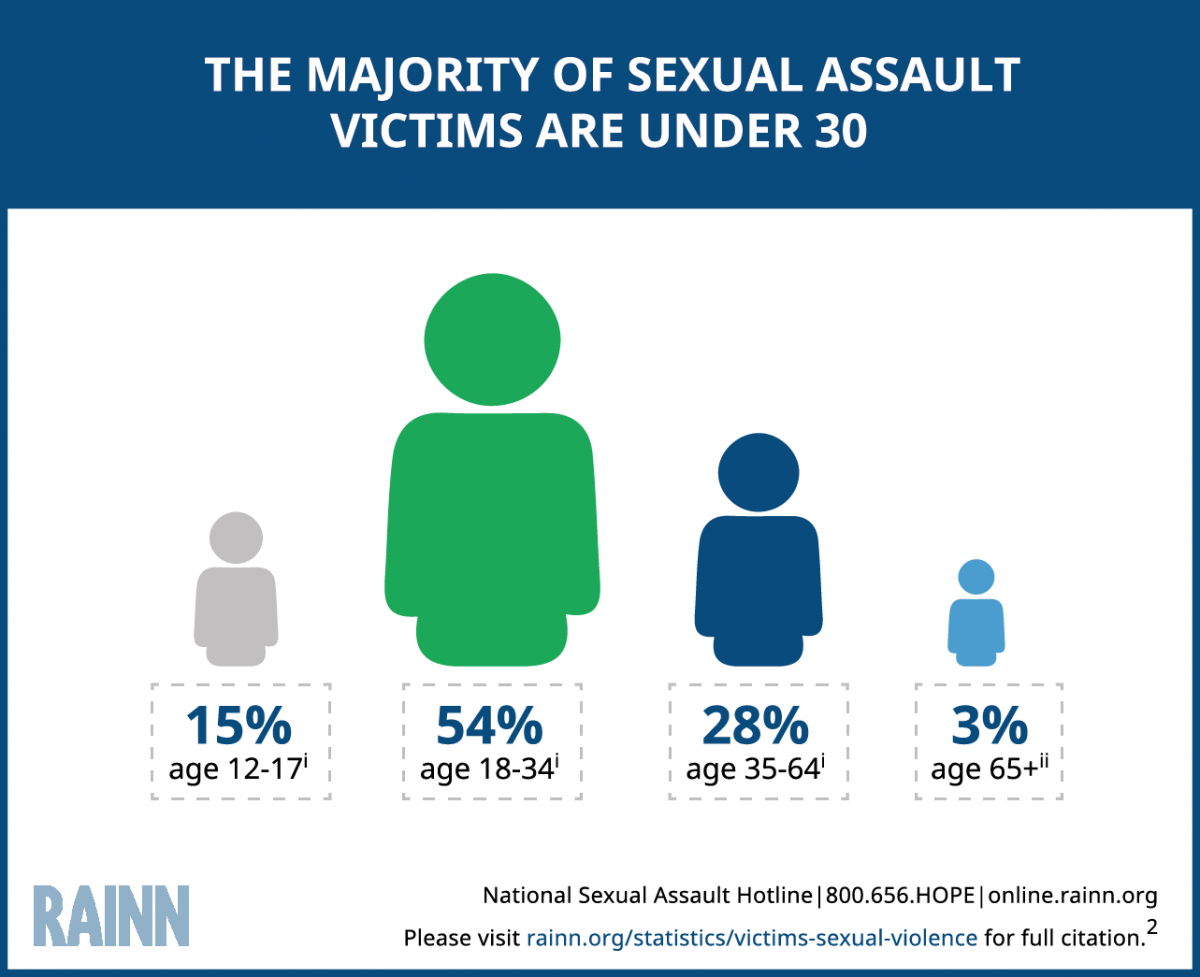Sex
Why Do Men Rape?
“Rape is not about sexual orientation or sexual desire. It is an act of power and control in which the victim is brutalized and humiliated.”

One of the keys to understanding the underlying visions of conservatives and progressives is to observe how they interpret crime. Progressives tend to believe that people are not born to be criminals; one way or another, crime is perceived to be a reflection and consequence of the structure of society and the unfortunate place in that society that the criminal occupies. Property crime is typically explained as a result of the unemployment and inequality produced by capitalism, and of the rigid property rights that prevent people from sharing resources more equally, as they might have done in the pre-societies described by Jean-Jacques Rousseau in his Discourse on the Origin of Inequality. Conservatives, on the other hand, are more likely to see crime as the result of a decaying of social morality, and are quick to point out that there was less crime during the darkest days of material deprivation during the Great Depression than there is today. According to the conservative worldview, self-interested people can be relied upon to trample others to get their own way, but the institutions of society restrain them so long as these institutions haven’t become degraded. According to the progressive worldview, the institutions of society are as much the cause of crime as their solution.
More often than not, criminals come from social groups perceived to be ‘less advantaged’ and hence we can understand the Left’s willingness to defend those individuals by locating the genesis of their crime in wider social structures. You might then stop to wonder how those on the Left explain sexual coercion, or rape, a crime of enormous violation and emotional as well as physical trauma. Rape is an inexcusable crime committed overwhelmingly by males against females. But this must be reconciled with the need to explain all forms of crime within the wider framework of failed social institutions in need of reform, argue the progressives, who then set about shifting the cause of rape from the male who actually commits the crime, onto wider society.

In 1975, the activist Susan Brownmiller set the feminist scene on fire when she popularised an answer to this problem borrowed from earlier theorists. In her radical book Against Our Will: Men, Women and Rape – later inducted into New York Library’s ‘Books of the Century’ – Brownmiller takes a swipe at Karl Marx, Sigmund Freud, and Ayn Rand (whom she regards as a female mouthpiece of male philosophy) all at once, and provides us with the immortal line that rape is “a conscious process of intimidation by which all men keep all women in a state of fear.” Brownmiller informs us that rape has nothing to do with men lacking in morals seeking sexual gratification; rather, rape is an invention by man to maintain a system of psychological dominance over women. Men are taught by the prevailing sexist ethos in Western society to use rape as an instrument to strike fear into the hearts of women, and women learn from the same system to fear men:
His forcible entry into her body, despite her physical protestations and struggle, became the vehicle of his victorious conquest over her being, the ultimate test of his superior strength, the triumph of his manhood. Man’s discovery that his genitalia could serve as a weapon to generate fear must rank as one of the most important discoveries in prehistoric times, along with the use of fire and the first crude stone axe.
However implausible this seems, it is a clever strategy on Brownmiller’s part. It both maintains its commitment to the progressive’s defence of the less privileged group, and also denies the origin of the crime within the individual, who is merely following the instruction he has received from society. This ideology has spread to the academic Left in the social sciences, where we are told that “Rape is not about sexual orientation or sexual desire. It is an act of power and control in which the victim is brutalized and humiliated.”1 Accordingly, the act of rape is actually normalized in Western patriarchal society: “Men rape because they have learned that rape is acceptable and normal behaviour.”2 Joan Beck of the Chicago Tribune wrote that, “If there is still any lingering misconception that rape is a crime of sexual passion, it’s important to drive a stake through the heart of that idea as quickly as possible…”3 Another writer calls the old model of rape “the ideological fantasies of those who justify sexual coercion,” and claims that admitting that rape is rooted in human desires “actually amounts to an incitement to rape.”4 But this is simply a naturalistic fallacy. Just because some people murder others in anger, a psychological reaction rooted in human nature, it does not follow that murder is in any way acceptable. Many things exist in nature, but that doesn’t require anyone to like or endorse them.
According to the sociologist Garbrilee Dietrisch, “Surveys show that a vast majority of rapes are planned. This goes to disprove the theory that the rapist is usually ‘provoked’ by the flimsy clothing worn by the victim, and is overcome by an overpowering physical urge. In fact, the rapist is asserting his power and urge to dominate.”5 Dietrisch seems to be arguing that because men don’t leap on top of an attractive woman when they first see her, rape cannot be motivated by sexual desire if it is committed after some planning. In other words, strategic preparation and sexual interest are mutually exclusive. But are a couple who go on a romantic date together not sexually interested in each other, just because their date was pre-planned? Dietrisch characterises the traditional view of rape as an “overpowering physical urge” that sweeps aside all forms of rationality. But this is a straw man. The motive for rape is the same as the motive for a romantic date – sexual desire, which the rapist satisfies by force and believes he will get away with in certain circumstances. Planning goes into that evil end.
Some defenders of the power theory of rape emphasize its pervasiveness in Western society by downplaying its existence in other societies. For instance, feminist sociologist Michael Kimmel claims “[w]e have evidence of the absence of rape” in “several cultures.”6 By golly, if he can prove this then he’s surely proven that men don’t rape for sex, just as the absence of drug use among the Zo’é people in the Amazon Rainforest proves that people in Western societies don’t use drugs for pleasure. Not only is this another non sequitur, but it’s factually dubious. Anthropologist Margaret Mead famously argued in Coming of Age in Samoa that rape was virtually absent in the Samoan Islands, while another anthropologist, Derek Freeman, found that rape was unusually high there.7 Mead made similar claims about the Mount Arapesh people in New Guinea, but these claims were also challenged by subsequent anthropological analysis.8

Toeing the party line, anthropologist Peggy Sanday states that in some societies, “the sexual act is not concerned with sexual gratification but with deploying the penis as a concrete symbol masculine social power.”9 To support her claim that rape is a cultural phenomenon, she provided her own study of the world’s anthropological literature.10 When the anthropologist Craig Palmer dissected Sanday’s study, he found that her conclusions drew unwarranted generalisations from patchy data.11 In reply, Sanday writes in a later work, “I did not take the ethnographers to mean that rape was literally absent, only that they found no evidence that rape was commonplace.”12 About one in every thousand men in the United States commit rape, and if rape were carried out at the same rate in tribal societies of only a few thousand people, it necessarily follows that rape will not be commonplace in these societies.
In Against Our Will, Brownmiller makes her own naïve foray into the worlds of anthropology and zoology, and attempts to uncouple sexual desire and rape by theorizing that it is a human social phenomenon not found elsewhere in nature: “No zoologist, as far as I am aware, has ever observed animals to rape in their natural habitat, the wild.” No zoologist, other than Severinghaus who found rape in deer.13 No zoologist, other than Barlow who found rape in fish.14 No zoologist, other than Manning who found rape in flies.15 No zoologist, other than Barash who found rape among ducks.16 No zoologist, other than all those who have found rape among monkeys, orangutans, chimpanzees, and gorillas.17 In one of the most famous cases in primatology, the eminent orangutan researcher Birutė Galdikas had to watch helplessly as one of her female assistants was raped by a large orangutan. In fact, as the reference to this sentence will amply demonstrate, the empirical zoological literature observing rape among animals in the wild is extensive.18 To be fair to Brownmiller, much of this research into sexual coercion in the animal kingdom blossomed after her book was published in 1975, although some observations had already been made by then.19 One systematic review of the zoological literature under the auspices of the American Psychological Association concludes:
Despite major gaps in the literature, a number of regularities are apparent. First, forced copulation is something males do to females. Although females in some species can be quite assertive when it comes to mating, we have not encountered a single instance of a female forcing sex on a male. Second, forced copulations do not appear to be an anomalous behaviour generated by such unusual conditions as overcrowding, captivity, or poor health. Third, males tend to target fertile females.20
If rape among humans is really about power instead of sexual desire, the females men find most sexually desirable, such as young women in the most fertile stages of life, should not be over-represented in rape statistics. According to the power theory, human behavior should diverge from that of other animals on this front. “Since sexual assault is all about power, not sex, the age or appearance of the victim is irrelevant,” declares one hospital information pamphlet summarizing the ideology of Left-dominated government bureaucracies in Australia. “Police reports show that babies and women in their nineties have been raped.”21 This assertion can’t be taken seriously. The data is actually unambiguous: young women are far more likely to be raped than infants or elderly women, which is exactly what we would expect if rape were about sex – as it is among other animal species – but not what we would expect if sexual desire were irrelevant.22 Finding anecdotal evidence of rape in infants and the elderly does nothing to invalidate this aggregate finding, particularly since we know that small minorities of people are sexually attracted to children and to the elderly.

Confronted with these challenging statistics, one might reply that young women are more likely to be raped because they are more vulnerable to crime in general. One formidable critic of the social-power theory of rape is the behavioural ecologist John Alcock, who writes in The Triumph of Sociobiology, “The widespread occurrence of rape across animal species is both consistent with evolutionary predictions and devastating to the social science explanation.” Alcock demonstrates that robbery is much more homogenous across age groups than rape, indicating that vulnerability is a poor explanation for the difference in levels of rape between young and elderly women. Moreover, he points out that a young woman is more likely to be raped during a robbery than an elderly woman. Young fertile women – the women men find most attractive – are more likely to be raped, and nobody has adequately explained this away.

Other evidence pointing to sexual desire as a motive for rape is dismissed by social scientists. Stopping Rape, a 2015 textbook by a team of sociologists, reads like a progressive party platform. These authors provide some interesting but predictable points, observing that rape correlates highly with poverty, homelessness, and gender inequality. War is a major catalyst for rape. All of these variables make women more vulnerable to male desires, but they are not explanations for rape independent of those desires. When these sociologists review studies on methods that aim to reduce sexual desire in rapists, including surgical and chemical castration, they only reluctantly admit that these studies tend to confirm the success of such methods.23 They find that rapists who do not receive surgical castration are 15 times more likely to reoffend than a rapist who does. Puzzlingly, the authors then state, “Since there is considerable evidence that sex crimes against women are not biologically driven, the intervention may be considered misplaced.” First they note that the empirical literature tends to confirm success in targeting biological desire, and then they dismiss this evidence as irrelevant because, as good sociologists, they know that rape isn’t about sexual desire.

The authors of Stopping Rape offer no detailed objection to biological explanations of rape and, in what almost amounts to academic misconduct, they don’t even mention one of the most important and widely discussed works on rape in recent years, A Natural History of Rape: Biological Bases for Sexual Coercion. Authored by the anthropologist Craig Palmer and the biologist Randy Thornhill, A Natural History of Rape argues that rape is deeply bound up in animal and human sexuality. Rape, Thornhill and Palmer reason, could be a byproduct of sexual desire as we normally imagine it to be, or it could be a specifically evolved psychological adaptation that has allowed men in the past to propagate offspring. This latter theory runs into too many obstacles. We know that rape is common among men in prison populations, and that many men who rape women do so in a non-vaginal ways. These forms of rape are not going to result in pregnancy, but all of them can be explained as byproducts of sexual desire along the continuum of human sexuality, or (in the case of prison rape) as substitutes for heterosexual sexual activity. (As Brownmiller sees it, prison rape is a continuation of dominance/subordinate relationships.)
What matters to Thornhill and Palmer is that, whether rape is an evolved adaptation in its own right or a byproduct of sexual desire, it is tightly interwoven with sexual desire rather than power, and if we are to be serious about stopping it, we need to take this into account. The psychologist Steven Pinker summarizes the situation best his modern classic The Blank Slate: The Modern Denial of Human Nature:
I believe that the rape-is-not-about-sex doctrine will go down in history as an example of extraordinary popular delusions and the madness of crowds. It is preposterous on the face of it, does not deserve its sanctity, is contradicted by a mass of evidence, and is getting in the way of the only morally relevant goal surrounding rape, the effort to stamp it out.
References:
1 Alcock, John (2001). The Triumph of Sociobiology. Oxford University Press.
2 White & Post in Travis, Cheryl (2003). Evolution, Gender, Rape. MIT Press.
3 Palmer, C & Thornhill, (2000) R. A Natural History of Rape. MIT Press.
4 White & Post in Travis, Cheryl (2003). Evolution, Gender, Rape. MIT Press.
5 http://www.manushiindia.org/pdfs_issues/PDF%20Files%204/71.%20Against%20our%20will.pdf
6 Travis, Cheryl (2003). Evolution, Gender, Rape. MIT Press.
7 Freeman, Derek (1983). Margaret Mead and Samoa. ANU Press.
8 Palmer, C & Thornhill, (2000) R. A Natural History of Rape. MIT Press.
9 Sanday, P. (1990). Fraternity Gang Rape. New York University Press.
10 Sanday, P. (1981). The Socio-Cultural Context of Rape: A Cross-Cultural Study. The Journal of Social Issues, Volume 37, Issue 4, Fall 1981, Pages 5–27.
11 Palmer, C & Thornhill, (2000) R. A Natural History of Rape. MIT Press.
12 Travis, Cheryl (2003). Evolution, Gender, Rape. MIT Press.
13 Severinghaus, C. 1955. Some observations on the breeding behavior of deer. New York Fish and Game Journal 2:239-241.
14 Barlow, G. 1967. Social behavior of a South American leaf fish. American Middle Naturalist. 78:215-234.
15 Manning, A. 1967. The control of sexual receptivity in female Drosophila. Animal Behaviour 15:239-250.
16 Barash, D. 1977. Sociobiology of rape in mallards: Responses of the mated male . Science 197:788-789.
17 Mitani, J. 1985. Mating ehavior of male orang-utans in the Kutai game reserve, Indonesia. Animal Behaviour 33:392-402;
Jones, C. 1985. Reproductive patterns in the mantled howler monkeys esters mate choice copulation; Primates 26:130-142;
Nadler, R. and Miller L. 1982. Influence of male aggression on mating of gorillas. Folia Primatological 38:233-239;
Goodall, J. 1986. The Chimpanzees of Gombe: Patterns of Behavior. Harvard University Press.
18 Oh, R. 1979. Repeated copulation in the brown plant hopper, Nilaparvata lugens Stal. Ecological Entomology 4: 345-353.
Parker, G. 1979. Sexual selection and sexual conflict. In Sexual Selection and Reproductive Competition in Insects, ed. M Blum and N Blum. Academic Press.
Cade, W. 1980. Alternative male reproductive behaviors. Florida Entomologist 63:30-44.
Pinkser, W., and Doschek, E. 1980. Courtship and rape: The mating ehavior of Drosophila subobscura in light and darkness. Zeitschrift fur Tierpsychologie 54: 57-70.
Smith, D. and Prokopy, R. 1980. Mating ehavior of Rhagoletis pomonella, VI. Site of early-season encounters. Canadan Entomologist, 121:585-590.
Thornhill, R. 1980. Rape in Panardo scorpionflies and a general rape hypothesis. Animal Behavior 28: 52-59.
Thornhill, R. 1981. Panorpa scorpion flies: Systems for understanding resource-defence polygyny and alternative male reproductive efforts. Annual Review of Ecology and Systematics 12:355-386.
Crespi, B. 1986. Territoriality and fighting in a colonial thrips Hoplothrips-pedicularius and sexual dimorphism in Thysanoptera. Ecological Entomologist 11:119-130.
Tsubaki, V. and Ono, T. 1986. Competition for territorial sites and alternative mating tactics in the dragonfly Nsnnophya-pygmae odonata Libelludidae. Behaviour 97:234-252.
Afton, A. 1985. Forced copulation as a reproductive strategy of male lesser Scaup Athya affinis: A field test of some predictions. Behaviour 92:146-167.
Hoogland, J., and Sherman, P. 1976. Advantages and disadvantages of bank swallow collegiality. Ecological Monographs 46:33-58.
Barash, D. 1977. Sociobiology of rape in mallards: Responses of the mated male . Science 197:788-789.
Bailey, R., R. Seymour, and G. Stewart. 1978. Rape ehavior in blue-winged teal. Auk 95:188-190.
Beecher, M., and Beecher, I. 1979. Sociobiology of bank ehavior: Reproductive strategy of male. Science 205:1282-1285.
Birkhead, T. 1979. Mate guarding in the magpie Pica pica. Animal Behaviour 33:608-619.
Gladstone, D. 1979. Promiscuity in monogamous colonial birds. American Naturalist 114:545-559.
Mineau, P. and Cooke, F. 1979. Rape in the lesser snow goose. Behaviour 117:262-280.
Bingman, V. 1980. Novel rape avoidance in mallards Anas platyrhynocos. Willson Bulletin 92:405.
Burns, J., K. Cheng, and F. McKinney. 1980. Forced copulations in captive mallards: 1. ehaviortion of eggs. Auk 97:875:879.
Mckinney et al 1983. Forced copulation in water fowl. Behaviour 86:250-294.
Mckinney, F., Stolen, P. 1982. Extra-pair-courtship and forced copulation among captive green-winged teal. Animal Behaviour 30:461-474.
Cheng et. Al. 1983. Forced copulation in captive mallards, Anas platyrhynchos. Animal Behaviour 30:695-699.
Birkhead, T., Johnson, S., Nettleship. 1985. Extra-pair matings and mate guarding in the common Murre Uria aalge. Animal Behaviour 33:608-619.
Bossemma, I., & Roemers, E. 1985. Mating strategy including mate choice in mallards Anas platyrhynchos. Ardea 72:147-157.
Van Rhijn, J., & Groethuis, T. 1985. Biparental care and the basis for alternative bond-types among gulls with special reference to black-headed gulls. Ardea 73:159-174.
Emlen, S., & Wrege, P. 1986. Forced copulations and intraspecific parisitism: two costs of social living in the white-fronted bee-eater. Ethology 71:2-29.
Constantz, G. 1975. Behavioral ecology in the male Gila topminnow, Poeciliopsis occidentalis. Ecology 56:966-973.
Kodric-Brown, A. 1977. Reproductive success and evolution of breeding territories in pupfish (Cyprinodon). Evolution 31:750-766.
Farr, J. 1980. The effects of sexual experience and female receptivity on courtship decisions in male guppies, Poecilla reticulate. Animal Behaviour 29:1272-1273.
Wells, K. 1977. The social behavior of anuran amphibians. Animal Behaviour 25:663-693.
Howard, R. 1978. The evolution of mating strategies in bull frogs, Rana catesbeiana. Evolution 32:850-871.
Cooper, W. 1985. Female residency and courtship intensity in a territorial lizard Holbrookia propinqua. Amphibia and Reptilia 6:63:71.
Rijksen, H. 1978. A Field Study on Sumatran Orangutans. Keenan and Zonen.
MacKinnon, J. 1979. Reproductive behavior in wild orangutan populations. In The Great Apes, Benjamin/Cummings.
19 Van Den Assem, J. 1967. Territory in the three spine stickleback, Gasterosteus aculeaturs L: An experimental study in infraspecific competition. Behaviour supplements: 16.
Fishelson, L. 1970. Behaviour and ecology of a population of Abudefdluf saxatalis (Oinacebtriidae: Teleostei) at Eliat (Red Sea). Animal Behaviour 18:225-237.
Lorenz, K. 1970. Studies in Animal and Human Behavior, volume 1. Harvard University Press.
Keeneyside, M. 1972. Infraspecific intrusions into nests of spawning longear sunfish. Copeia 272:278.
Linley, J. 1972. A study of the mating ehavior of Coliciodes malleus. Transactions of the Royal Entomological Society of London, 126: 279-303.
Pinto, J. 1972. A synopsis of bionomics of Phoda alticeps with special reference to sexual ehavior. Canadian Entomologist 104:577-595.
MackKinnon, J. 1974. In Search of the Red Sea. Holy, Rinehart, Winston.
Parker, G. 1974. Courtship persistence and female guarding as male time-investment strategies. Behaviour 48:157-184.
Las, A. 1972. Male courtship persistence in the greenhouse whitefly. Behaviour 72: 107-126.
20 Lalumiere, M., Harris, G., Quinsey, V. Rice, M. (2005). The Causes of Rape. American Psychological Association.
21 http://www.gvcasa.com.au/documents/myths_facts.pdf
22 Department of Justice, Office of Justice Programs, Bureau of Justice Statistics, Sex Offenses and Offenders (1997);
Department of Justice, Office of Justice Programs, Bureau of Justice Statistics, Crimes Against the Elderly, 2003-2013 (2014).
23 Walby, S., Olive, P., et al. (2015). Stopping Rape: Towards a Comprehensive Policy. Policy Press.






